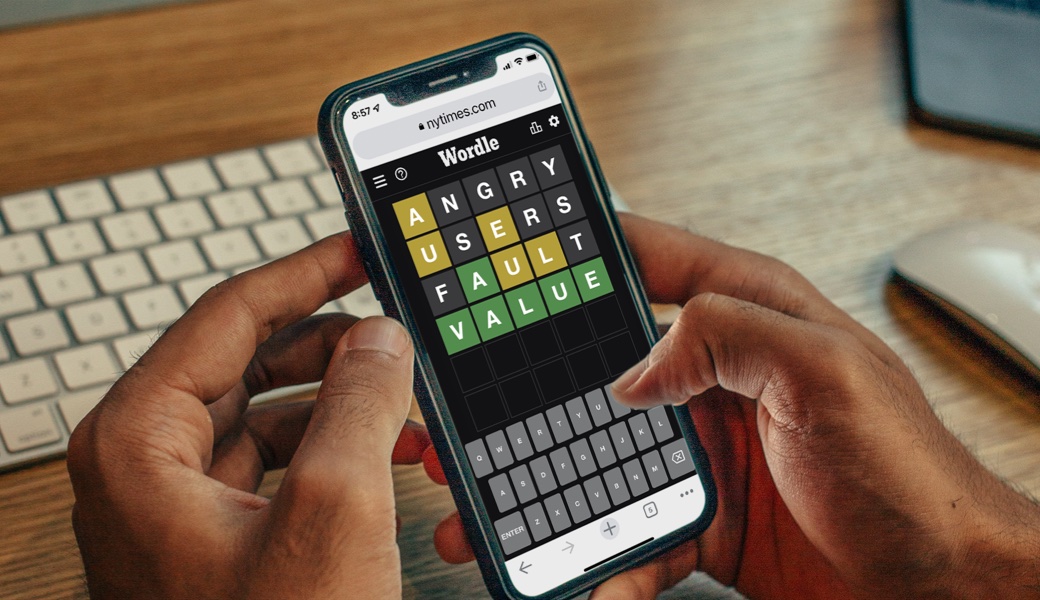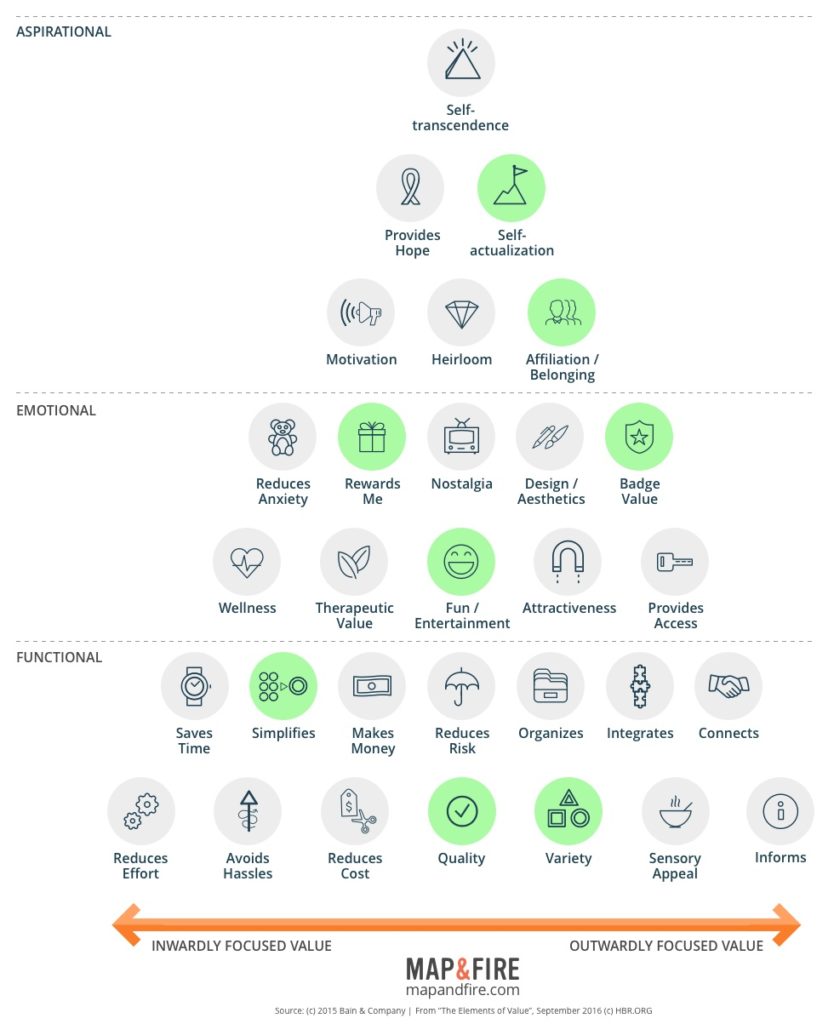
Every brand’s goal is to build strong, loyal customer relationships. All the brand strategy and marketing work we do really focuses on that one thing – align our products and services with the outcomes our audience seeks in their lives.
The challenge is if a brand makes changes that impact those established customer connections it can lead to frustration. Change requires energy, and as humans we usually want to conserve our energy whenever possible.
Despite our innate resistance to change, the products and services we use are always in a state of flux. Sometimes it’s a shift of features, sometimes it’s a change of price, and sometimes brands change ownership entirely.
Generally, the purpose of changes are to enhance the value customers receive – a shiny new feature or improved user experience. But when a change has a perceived negative impact on the value customers expect, it’s bound to ruffle some feathers.
The online game, Wordle has gone through an interesting version of change recently.
After an incredible amount of growth, the brand went through a very public change of ownership. Shortly after, complaints started that the game itself had changed, too.
And its players were not happy about it.
Wordle’s Explosion Of Growth

If you spend any time online, you’ve likely seen Wordle’s now iconic stacks of tiny colored blocks posted all over social media.
Wordle’s a very simple online game where players get 6 chances to guess a 5 letter word-of-the-day. After each guess, the player receives feedback on letters that are or aren’t part of the word. Everyone who plays gets the same word and the goal is to guess it in as few tries as possible.
It’s been a viral phenomenon over the past few months. When it launched in November 2021, 90 people played it. In early January it was up to 300,000 players. By the end of January, estimates were around 3 million players.
As a result of that meteoric rise, the New York Times purchased the game from its creator, James Wardle, on January 31, 2022 for around $1,000,000.
By February 10th, the game officially moved to the New York Times website.
That’s when the central conspiracy theory cropped up:
Did Wordle get harder?
Before we dig into that question, let’s first establish what attributes fueled Wordle’s viral growth.
The Positioning That Made Wordle Go Viral

The key Elements of Value that Wordle taps into include:
- Quality
- Simplifies
- Variety
- Fun / Entertainment
- Rewards Me
- Badge Value
- Affiliation / Belonging
- Self-Actualization
Looking at these Elements, Wordle’s viral potency is rooted in a 4-part combination of:
- The structure of the game is easy to learn and there’s nothing to download (Simplifies, Quality)
- It makes you think, but not too much (Fun / Entertainment)
- There’s a variable reward component with how quickly you guess the word (Variety)
- When you solve it you feel smart and can brag about your result (Badge Value, Affiliation / Belonging, Self-Actualization)
Each factor is positive on its own, and together they create the perfect blend of functional, emotional, and aspirational value. Completing the daily puzzle feels good on a personal level and it offers recurring shared experiences with others.
So, what happens if Wordle becomes just a little bit harder?
Wordle’s Debated Increase Of Difficulty
NYT: No, we did not make Wordle harder. We promise.
Also NYT: Today’s Wordle is KHYBX — which everyone knows is a popular 11th century Latin delicacy derived from quicksand extract. Duh.
— John Kapetaneas (@JohnKapetaneas) February 14, 2022
First off, there’s been plenty written about whether the New York Times has actually made Wordle harder or not.
Their stance is that while they did make some tweaks to remove some offensive words, the essence of the game and database of words has not changed.
But based on the current trend of answers to the game, the words have felt more difficult or obscure. In particular, some recent words have spellings that don’t lend themselves to lots of guessing options, e.g. “Ulcer” or “Cynic”.
On a purely anecdotal note, my wife and I have been playing for 3-4 weeks and we track our results as a friendly form of competition. Since the New York Times took over, we’ve both felt some added challenge around the word selection.
Our average number of guesses has increased as well, though not dramatically – about 6% and 14% (to protect the innocent I won’t say whose average increased the most).
It’s a very small sample size, so it’s most likely a statistical blip. But it does reflect a shift that’s affected our perception and enjoyment of the game.
In particular, guessing harder words impacts 3 of the 4 core elements that make Wordle so fun and addictive:
- The structure of the game is the same (Simplifies stays the same)
- It makes you think harder for a longer time (Fun / Entertainment decreases)
- The variable reward of guessing early goes down (Variety decreases)
- If you perform badly, you don’t feel as smart and there’s less motivation to brag (Badge Value, Affiliation / Belonging, Self-Actualization all decrease)
When you string those pieces together, you can see why users would get frustrated and may have less desire to play.
Again, this is likely a random blip in word selection that just happened to coincide with the change of ownership to the New York Times.
But if you like conspiracy theories, it’s easy to imagine the New York Times making the game a tiny bit harder to increase time spent on their site, spark discussion on social media, and maximize their recent investment.
Not an accusation of course, just a theory.
The bottom line is that there’s a perception from users that something has changed for the worse. The alignment they felt with a product that filled a need no longer satisfies them in the same way.
As a brand, there’s a fine line between normal discussion around change and frustration that leads to abandonment. It’s up to the brand to make sure customers don’t start shifting into the latter bucket.
How To Manage Changes For Your Brand Strategy

Setting aside the Wordle situation, there’s a great lesson here around dealing with changes in your brand. It all starts with establishing a clear understanding of the relationship between your brand’s offerings and the needs of your customers.
If you’re going to make a change that impacts your offering and positioning – even if it’s intended to be a positive – you need to think through the impact it can have on your audience.
Some questions to ask include:
- Which Elements of Value does our offering align with currently?
- How will the proposed change impact each of those elements individually?
- What sort of collective impact could result from the change?
- Could a shift in one area create unexpected impacts to another?
- Is there potential risk of customers leaving our brand as a result?
- How can we use this understanding to inform and prepare our customers for what’s to come to mitigate any perceived issues?
Change isn’t always a bad thing. But even if your brand’s intentions are positive, you have to expect customers to perceive any shift as potentially having a negative impact on their experience. As long as you recognize this behavior and prepare your customers, it will be much less likely to cause frustration.
And if you truly didn’t change anything at all (New York Times?), it’ll probably smooth itself out in due time.

Get Help Connecting With Your Customers
If you’re ready to build stronger connections with your customers, reach out for a free consultation. We’ll help you transform your best business thinking into an actionable, shareable, growth-oriented guide. Click below to learn more about the Brand Guidebook process.

